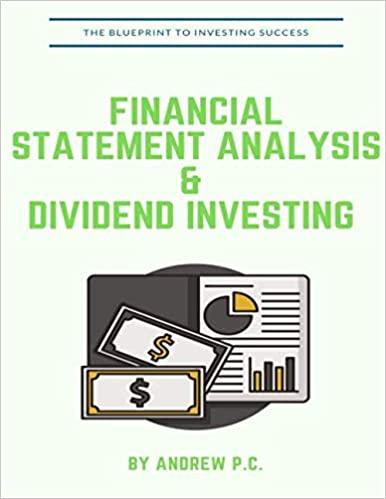Question
Case 1: Personal Budgeting and planning to buy a House My name is Emily. I am 22 years old and I am single. I am
Case 1: Personal Budgeting and planning to buy a House
My name is Emily. I am 22 years old and I am single. I am the third year BBA student at Vancouver Island Universty. I work full time at nails and beauty salon. I have three years experience and I earns $8,000 net after tax and deduction and around $3,000 more included tips and retail commission per month. My gross salary is $132,000 per year. My long-term goal is looking for a house which is listed for around $700,000 to $1,000,000 and that would be amortized over 35 years at annual interest rate 4.20% and down payment is 25% on a purchase price of a property including annual property taxes. Moreover, my shorter-term goals is paying my tuition fee for the fourth year ($20,000 including insurance and bookes). As far as assets and liabilities that I has RRSPs worth $300,000 and $100,000 respectively, and also I have a savings or chequing account worth $50,000. Furthermore, I have a Scotiabank Visa that carries an 17% interest rate and requires minimun payments of 3% per month. The limit of my visa card is $1,000 and approximately I borrow around $100 to $400 per month.
I expect to spend:
- Food is $300 per month
- Bus pass is $40 per month
- Rental house fee is $550 per month including heat, hydro and wifi.
- Personal care ( haircuts, massage) is $200 per month
- Miscellaneous items like clothes, skin care products are around $200 per month
As an extension the financial plan above, provide a strategy for purchasing a house / apartment after you graduate and find work. Make any reasonable assumptions necessary to complete the assignment, but you are required to:
1.Balance cash flows for the next year; 2. Develop and describe implementation and control strategies.
3.Identify the home you wish to buy, including location, cost and any financing issues. Include a broker or MLS description; 4. Explain the costs and requirements of a high-ratio mortgage (90%) versus a lower ratio (80%), focusing on the lifetime cost of the mortgage and the monthly funding requirement and debt/service implication; 5. Identify a prospective lender and describe the expected costs, conditions and features of the proposed mortgage; 6. Assess your suitability for the proposed mortgage and provide the GDS, TDS and maximum mortgage calculations; 7. Explain your choice of fixed / variable rate mortgage; closed / open mortgage, amortization period and any other mortgage features you feel are important. What mortgage rate will you have to pay, and how have you calculated this?
Step by Step Solution
There are 3 Steps involved in it
Step: 1

Get Instant Access to Expert-Tailored Solutions
See step-by-step solutions with expert insights and AI powered tools for academic success
Step: 2

Step: 3

Ace Your Homework with AI
Get the answers you need in no time with our AI-driven, step-by-step assistance
Get Started


